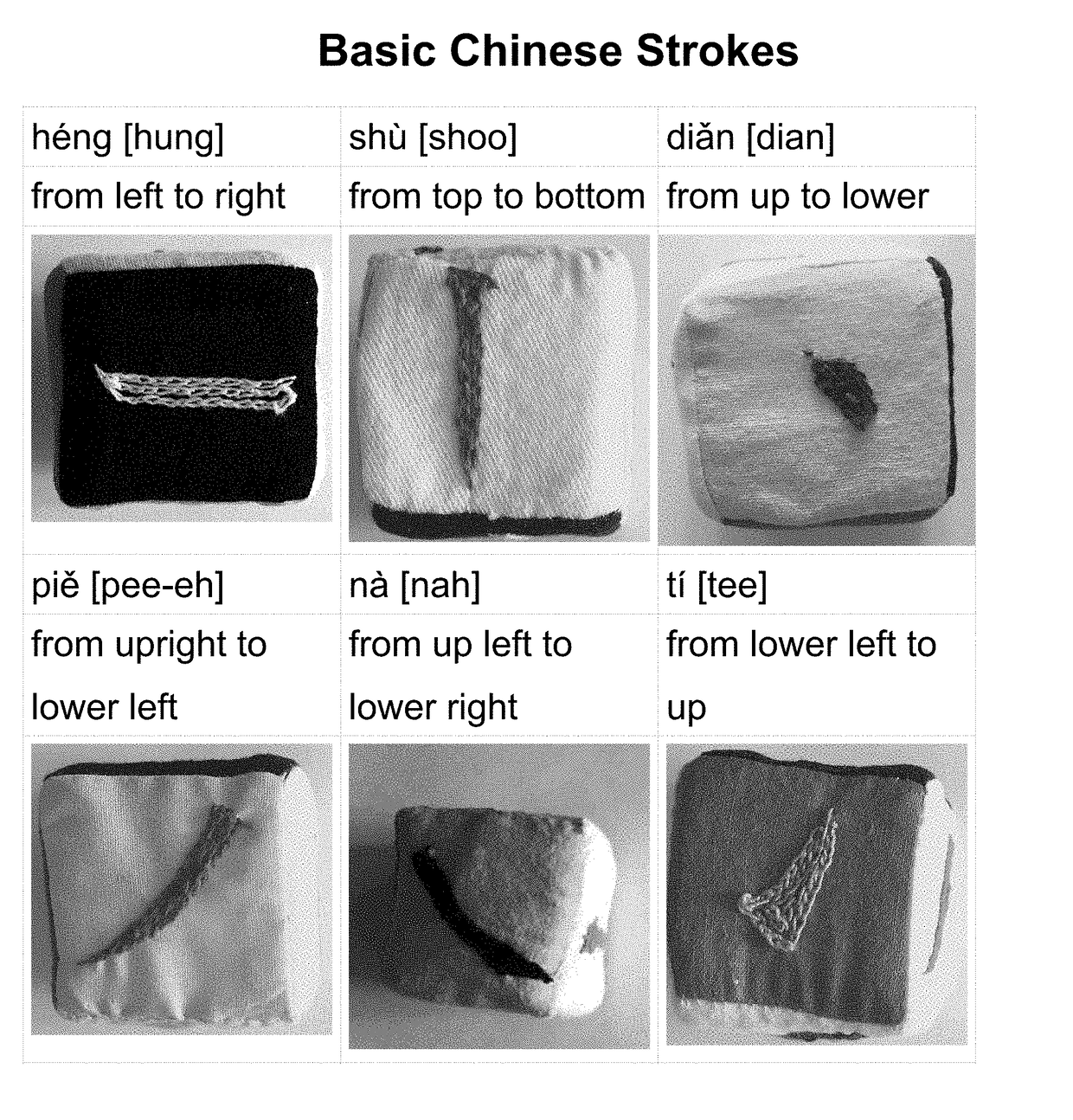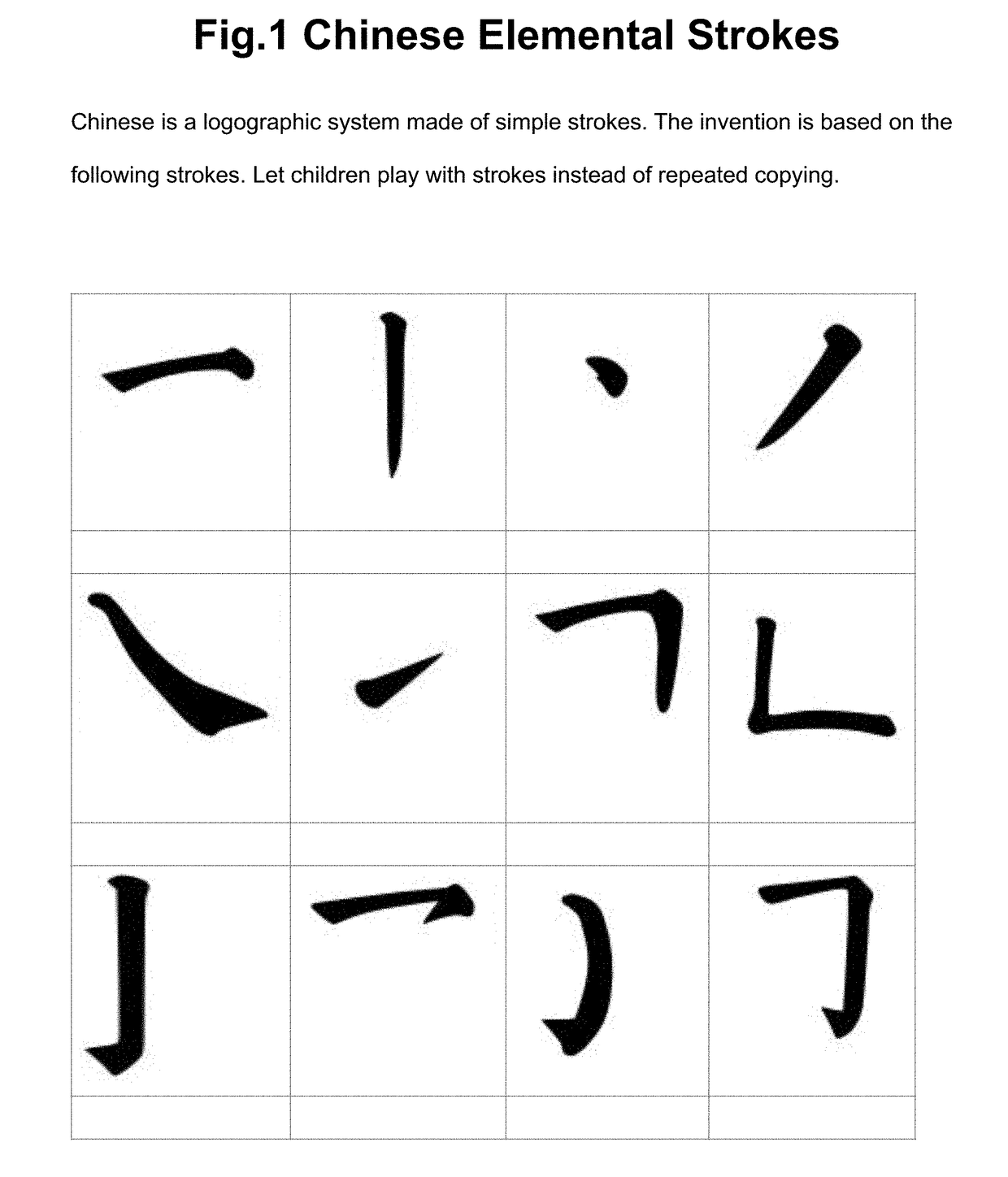Chinese Stroke Toys
a technology of stroke toys and strokes, applied in the field of stroke toys, can solve the problems of easy loss of interest, tedious copying of words many times, etc., and achieve the effects of improving the efficiency of learning new words, and reducing the time and burden of memorizing
- Summary
- Abstract
- Description
- Claims
- Application Information
AI Technical Summary
Benefits of technology
Problems solved by technology
Method used
Image
Examples
embodiment 1
[0017]Referring to FIG. 4 the first cube of six basic Chinese Strokes which are the fundamental components of Chinese characters based on Chinese handwriting style, mommy (or a caregiver or a teacher) holds baby's finger moving in the direction of each stroke on the cube. In this way, mom (or a caregiver or a teacher) practices 1-10 minutes for three months. The length of time or period depends on the child's interest, as each child is unique.
[0018]Mommy (or a caregiver or a teacher or even the child if he can) rolls or throws up the cube then let the child moves along the direction of each stroke on the cube. In this way, mommy with her baby practices 5-10 minutes for three months. The length of time or period depends on the child's interest, as each child is individual.
embodiment 2
[0019]As shown in FIGS. 5 and 6, these strokes are developed from the first six Basic Chinese strokes. Using the same method as stated in EMBODIMENT 1. The length of time or period varies with baby's attention.
embodiment 3
[0020]With reference to FIGS. 7 and 8, these strokes are expanded from the first Basic Chinese Strokes and the Developed Chinese Strokes which are a little complicated and use the same method as stated in EMBODIMENT 1, the length of time or period can be adjusted longer in line with baby's enthusiasm.
PUM
 Login to View More
Login to View More Abstract
Description
Claims
Application Information
 Login to View More
Login to View More - R&D
- Intellectual Property
- Life Sciences
- Materials
- Tech Scout
- Unparalleled Data Quality
- Higher Quality Content
- 60% Fewer Hallucinations
Browse by: Latest US Patents, China's latest patents, Technical Efficacy Thesaurus, Application Domain, Technology Topic, Popular Technical Reports.
© 2025 PatSnap. All rights reserved.Legal|Privacy policy|Modern Slavery Act Transparency Statement|Sitemap|About US| Contact US: help@patsnap.com



